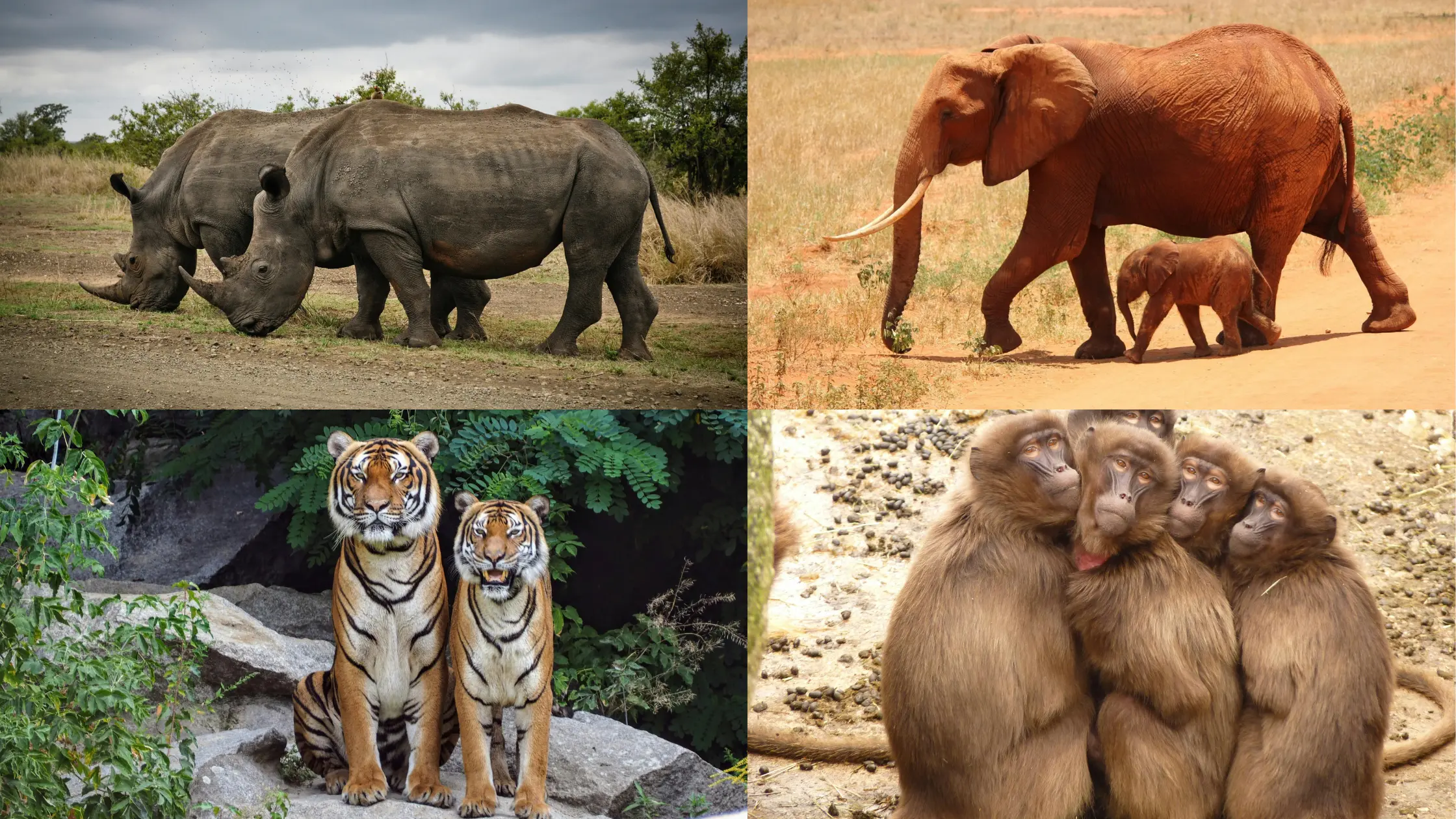Unveiling Animal Longevity: Life Spans in the Wild
The animal kingdom showcases a remarkable variety of lifespans, reflecting the diverse adaptations and ecological niches these creatures occupy. From the fleeting life of a house mouse to the astonishing longevity of the Greenland shark, understanding these lifespans offers insights into the biology, behavior, and environmental challenges each species faces. Let’s take a closer look at some of these fascinating animals and the factors influencing their longevity.
1 Year: House Mouse
The humble house mouse, often considered a pest, has a brief lifespan of just one year. This short life is largely due to predation and environmental hazards. Mice reproduce rapidly, with females capable of having a new litter every three weeks. This strategy ensures their survival as a species, despite the high mortality rate that individual mice face.
Table of Contents
5 Years: Pigeon
Pigeons, often seen in urban areas, can live up to five years in the wild. Their longevity is somewhat enhanced in cities where food sources are abundant. Interestingly, domesticated pigeons can live longer, sometimes up to 15 years, thanks to reduced predation and better care. Their homing abilities and social structures play a role in their survival, both in the wild and as pets.
6 Years: Kangaroo
Kangaroos, iconic symbols of Australia, typically live around six years in the wild. Factors such as habitat destruction and predation from introduced species like dingoes and cats can impact their lifespans. In conservation areas, where they are protected from these threats, kangaroos can live longer and thrive.
10 Years: Chicken
Chickens have an average lifespan of about 10 years, but this varies significantly based on their environment. Backyard chickens, which are often free-range and receive good care, can live up to 15 years or more. In contrast, factory-farmed chickens are usually slaughtered at just six weeks old, highlighting the impact of human intervention on animal longevity.
13 Years: Dog
Dogs, known for their loyalty and companionship, live around 13 years on average. However, this varies greatly among breeds. Smaller breeds like Chihuahuas can live up to 20 years, while larger breeds like Great Danes typically have a lifespan of just 7 to 10 years. Genetics, diet, and healthcare play crucial roles in determining a dog’s lifespan.
15 Years: Tiger
Tigers in the wild can live around 15 years, but many do not reach this age due to poaching, habitat loss, and human-wildlife conflict. In protected environments like zoos, tigers can live into their 20s. The conservation of their habitats is vital for ensuring their survival and longevity.
20 Years: Cow
Cows, a staple of agriculture, can live up to 20 years. In free range or organic farming systems, where they are treated humanely, cows can often reach their maximum lifespan. However, in conventional farming practices focused on production, many cows are culled much earlier.
25 Years: Horse
Horses are known for their strength and beauty, and they typically live around 25 years. Like dogs, their lifespan can vary significantly based on breed, care, and lifestyle. Some horses, especially ponies, can live well into their 30s. Regular veterinary care, proper nutrition, and exercise are essential for their longevity.
30 Years: Burmese Rock Python
Burmese rock pythons can live around 30 years in captivity, although they face many challenges in the wild that can reduce their lifespan. Captivity allows them to thrive without the threats of predation and food scarcity. Their ability to grow large and survive in various habitats contributes to their longevity.
45 Years: Orangutan
Orangutans, highly intelligent primates, can live around 45 years in the wild. Threatened by habitat loss and poaching, their survival depends heavily on conservation efforts. In protected environments, orangutans can live to be over 50 years old, emphasizing the importance of preserving their natural habitats.
50 Years: Elephant
Elephants are known for their impressive lifespans, averaging around 50 years in the wild. However, they can live up to 70 years in protected areas. Elephants face numerous threats, including habitat destruction and poaching for ivory. Conservation efforts are crucial for ensuring their long-term survival.
60 Years: Flamingo
Flamingos can live up to 60 years, with some individuals in captivity reaching even greater ages. Their unique social structures and breeding behaviors contribute to their longevity. Conservation of wetland habitats is essential for maintaining healthy flamingo populations.
100 Years: Galapagos Tortoise
The Galapagos tortoise is an emblem of longevity, with lifespans averaging around 100 years. Some individuals are believed to live over 150 years. Their slow metabolism and unique adaptations allow them to thrive in harsh environments. Conservation efforts are crucial to protect these iconic creatures.
200 Years: Bowhead Whale
Bowhead whales are one of the longest living mammals, with lifespans of up to 200 years. Their longevity is attributed to their slow reproductive rate and the cold waters they inhabit, which may slow metabolic processes. Protecting their habitat from climate change and hunting is vital for their survival.
272 Years: Greenland Shark
The Greenland shark holds the record for the longest-living vertebrate, capable of reaching 272 years. Their slow growth rate and coldwater habitat contribute to their impressive lifespan. Understanding their biology can provide insights into aging and longevity across species.
2,300 Years: Giant Barrel Sponge
In the realm of invertebrates, the giant barrel sponge stands out, with a lifespan of up to 2,300 years. These marine creatures play a crucial role in coral reef ecosystems, filtering water and providing habitat for various marine species. Their longevity underscores the importance of preserving marine environments.
4,309 Years: Black Coral
The oldest living creature on the planet, black coral can live over 4,309 years. Found in deep oceanic waters, these corals grow very slowly, making them highly vulnerable to environmental changes and human activities. Protecting their habitats is essential for preserving these ancient organisms.
Conclusion
The diverse lifespans of animals illustrate the incredible adaptations that have evolved in response to environmental pressures. From rapid reproduction strategies in small mammals to the slow, steady growth of ancient corals, each species has found its niche in the ecosystem. Understanding these lifespans not only enriches our appreciation for the animal kingdom but also underscores the need for conservation efforts to protect these magnificent creatures and their habitats for future generations.







